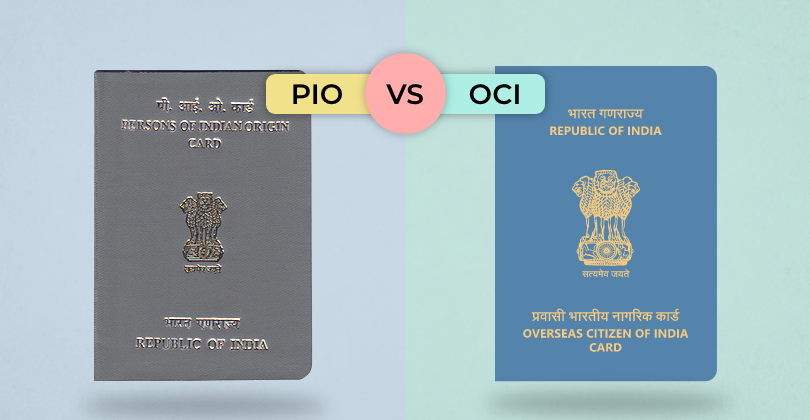Are you of Indian origin and living abroad? You've probably come across terms like PIO and OCI. These cards offer different benefits, but it can
In the realm of financial possibilities, where dreams are given wings and aspirations find their footing, there's a term that holds the key to making things more affordable. It's a concept that's both practical and accessible, catching the attention of those in need of financial assistance.
EMI—short for Equated Monthly Instalment, is a term that resonates with caution. But what hides beneath this enigmatic acronym? Let us explore what an EMI is and other details about it in this article here.
What is EMI?
EMI, is a term you often come across when dealing with loans or making big purchases. But what does it really mean? Consider EMI a convenient way to manage your expenses and make your purchases more affordable.
Here's how it works: Let's say you want to buy a car worth ₹2,00,000. Instead of paying the complete amount upfront, you can repay a loan in monthly instalments over a fixed period, usually a few years. So, the EMI is the fixed monthly amount you pay towards the loan.
EMIs make it easier to budget your finances as you know exactly what amount you must pay each month. Also, it allows you to spread the cost of your purchase evenly over a longer period.
While EMIs make things more affordable, you'll also be paying interest on the loan amount. So, the interest rate and the total cost you pay over the loan tenure must be known beforehand.
How to calculate EMI?
Calculating EMI (Equated Monthly Instalment) can be done using a simple formula. Let's break it down step by step:
The formula to calculate EMI is as follows:
EMI = [P x R x (1+R)^N] / [(1+R)^N-1]
- EMI is the Equated Monthly Instalment
- P is the principal loan amount
- R is the monthly interest rate (annual interest rate divided by 12)
- N is the number of monthly instalments or the loan tenure in months
To explain it further, let's see an example:
Suppose you take a car loan for ₹5,00,000 with an annual interest rate (IR) of 10% for a tenure of, say, 5 years (60 months).
First, convert the annual interest rate to a monthly interest rate. In this case, the monthly interest rate would be 10%/12 = 0.00833.
Using the formula, you can calculate the EMI as follows:
EMI = [500000 x 0.00833 x (1+0.00833)^60] / [(1+0.00833)^60-1]
By simplifying the equation, you will find that the EMI for this loan would be approximately ₹10,609.
This means that your monthly payment will be ₹10,609 for 60 months to repay the loan amount along with the interest.
What is a loan amortisation schedule?
You now know everything and have an answer to what an EMI is. Now, let's move forward and learn about loan amortisation. A loan amortisation schedule helps you understand the breakdown of your loan payments over time. It provides a detailed roadmap and shows how each payment you make contributes towards repaying the principal loan amount and the interest charged.
Let's say you take out a loan, such as a home or car loan. The amortisation schedule outlines each payment you need to make, the amount allocated towards the principal, and the interest.
For example, suppose you take a home loan for ₹50,00,000 at an interest rate of 8% per annum for a tenure of 20 years. The loan amortisation schedule will provide a month-by-month breakdown of your payments.
In the initial years, a larger portion of your EMI will pay the interest, while a smaller portion will reduce the principal amount. However, as time goes by, the interest portion decreases, and the principal repayment portion increases.
Factors Affecting Equated Monthly Instalment (EMI)
You might find more answers after knowing what EMI is. So, let's explore the key factors that influence it:
- Loan Amount
The principal loan amount is the initial sum borrowed. As the loan amount increases, the EMI also tends to increase, assuming other factors remain constant. For example, a higher loan amount for purchasing a car will result in a larger EMI compared to a smaller loan amount.
- Interest Rate
The interest rate is the percentage the lender charges on the loan amount. A higher interest rate means a larger EMI, while a lower interest rate would lead to a smaller EMI.
For instance, a loan with a 10% interest rate will have a higher EMI compared to a loan with a 7% interest rate for the same loan amount and tenure.
- Loan Tenure
The loan tenure is the duration over which the loan is repaid. A 5-year car loan will have a higher EMI than a 7-year car loan, assuming all other factors remain the same.
- Frequency of Compounding
The compounding frequency determines how often interest is calculated on the loan amount. Common compounding frequencies include monthly, quarterly, or annually, and higher compounding frequencies generally result in higher EMIs.
- Down Payment
The down payment is the initial amount paid upfront before taking the loan. A higher down payment reduces the loan amount, resulting in a smaller EMI.
- Credit Score
A good credit score indicates a borrower's creditworthiness. Lenders often offer lower interest rates and favourable EMIs to borrowers with higher credit scores.
- Prepayment
Making prepayments towards the loan principal reduces the outstanding balance, which can lower the EMI or shorten the loan tenure
- Floating or Fixed Interest Rate
Choosing between a floating or fixed interest rate affects the EMI. Floating rates may vary with market conditions, leading to fluctuations in the EMI, while fixed rates offer stability.
- Processing Fees
Lenders often charge processing fees for loan approval. These fees are added to the loan amount and increase the total repayment, thus impacting the EMI.
Final Words
Get loans on easy EMI today! KreditBee offers short-term loans ranging from ₹1,000 to ₹50,000, available round the clock. With a repayment cycle designed for convenience, you'll attain your financial goals faster than ever before.
Curious about your Equated Monthly Instalment (EMI)? Use an EMI calculator. It will provide you with instant clarity to plan your budget with confidence.
AUTHOR
KreditBee As a market leader in the Fintech industry, we strive to bring you the best information to help you manage finances better. These blogs aim to make complicated monetary matters a whole lot simpler.







